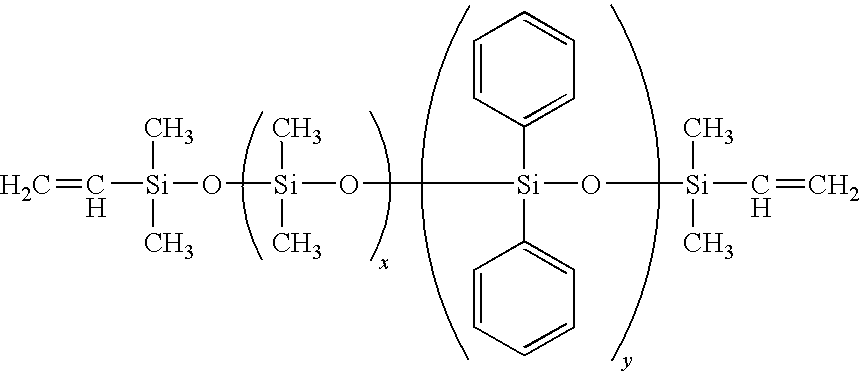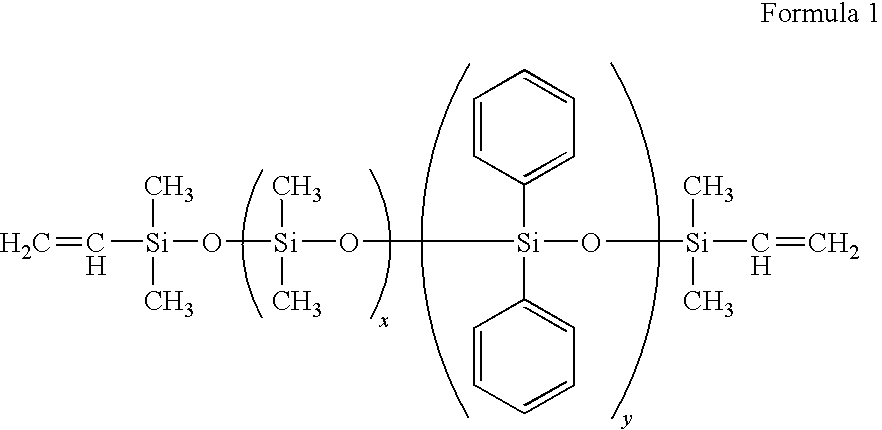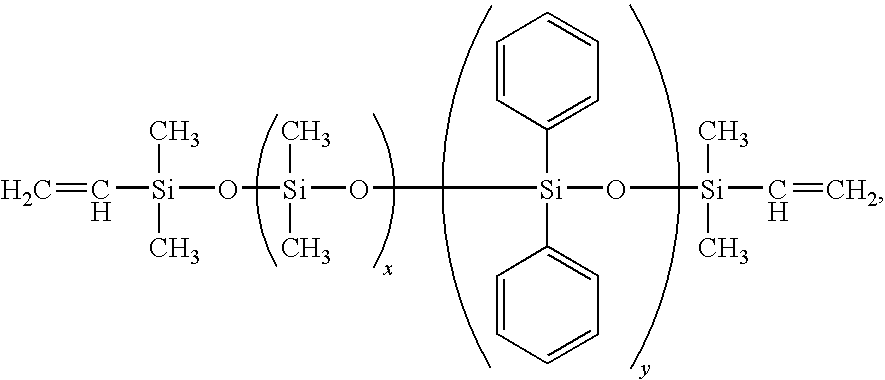Hybrid intraocular lens materials for small incision surgery
a technology of intraocular lens and lens material, which is applied in the direction of prosthesis, instruments, optical elements, etc., can solve the problems of corneal damage, scarring or abrasion, and visual acuity loss, and achieve the effect of improving visual acuity, scarring or abrasion, and reducing the risk of infection
- Summary
- Abstract
- Description
- Claims
- Application Information
AI Technical Summary
Benefits of technology
Problems solved by technology
Method used
Image
Examples
example 1
Synthesis of a Acrylic-Silicone Hybrid
[0054]In one method for making the biocompatible polymers of the present invention, a reaction mixture is prepared in a suitable reaction vessel such as a one liter three-neck round-bottom flask by carefully mixing about 50 mass % phenoxyethyl acrylate (PEA), about 10 mass % ethyl methacrylate (EMA), about 30 mass % ethylacrylate (EA), about 9 mass % of AMO silicone fluid, about 0.3 mass % ethyleneglycol dimethacrylate (EGDMA), about 1 mass % of a suitable thermal initiator, such as a peroxide including but not limited to di-tert-butyl peroxide (Trigonox® a registered trademark of Akzo Chemie Nederland B.V. Corporation Amersfoort, Netherlands) and / or 2,5-dimethyl-2,5-bis(2-ethylhexanoylperoxy) hexane) and about 0.25 mass % of UVAM. The thermal initiator is generally added last after the reaction vessel is securely supported and provided with a mixing means such as a magnetic stir plate with stir bar or a low-shear impeller and overhead drive. Ne...
example 2
Forming the IOL from the Acrylic-Silicone Hybrid
[0055]The IOLs of the present invention are formed by transferring the biocompatible polymer reaction mixture into molds having the desired shape before the polymerization and cross-linking reactions are complete. In one embodiment of the present invention, molds are provided to receive the liquid reaction mixture. The molds are first brought to a suitable temperature that permits the polymer IOL material to cure in a controlled manner. In one embodiment of the present invention, a water bath is used to maintain mold temperature at about 80° C.±2° C. One non-limiting method for transferring the reaction mixture to the molds is by increasing the pressure in the reaction vessel relative to atmospheric pressure and providing a route for the pressurized reaction mixture to exit the reaction vessel. In one embodiment of the present invention nitrogen gas is pumped into the reaction vessel and the reaction mixture is forced from the reaction...
PUM
| Property | Measurement | Unit |
|---|---|---|
| tensile strength | aaaaa | aaaaa |
| elongation at break | aaaaa | aaaaa |
| tensile strength | aaaaa | aaaaa |
Abstract
Description
Claims
Application Information
 Login to View More
Login to View More - R&D
- Intellectual Property
- Life Sciences
- Materials
- Tech Scout
- Unparalleled Data Quality
- Higher Quality Content
- 60% Fewer Hallucinations
Browse by: Latest US Patents, China's latest patents, Technical Efficacy Thesaurus, Application Domain, Technology Topic, Popular Technical Reports.
© 2025 PatSnap. All rights reserved.Legal|Privacy policy|Modern Slavery Act Transparency Statement|Sitemap|About US| Contact US: help@patsnap.com



